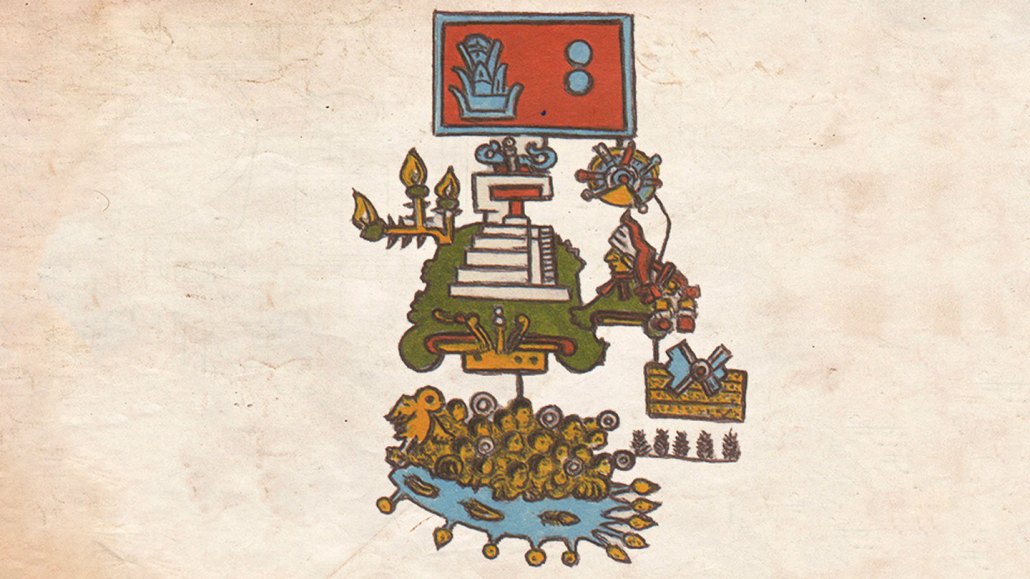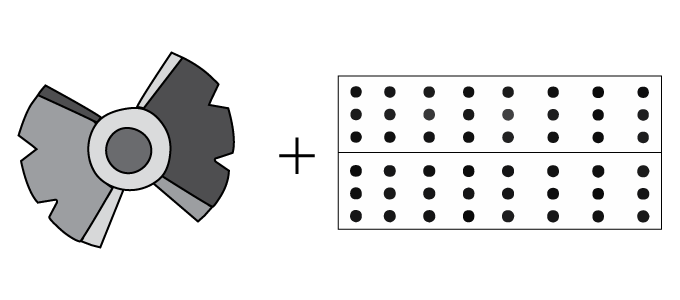
This pictogram tells of an earthquake that took place in the year 1507. The quake is represented by the symbol (middle, right) composed of four dotted yellow rectangles overlain by four helices (in blue and white) with a red eye at the center. The pictogram also describes one impact of the quake: the drowning of 1,800 warriors in a river (bottom).
G. Suárez and V. García-Acosta/Seismological Research Letters 2021







